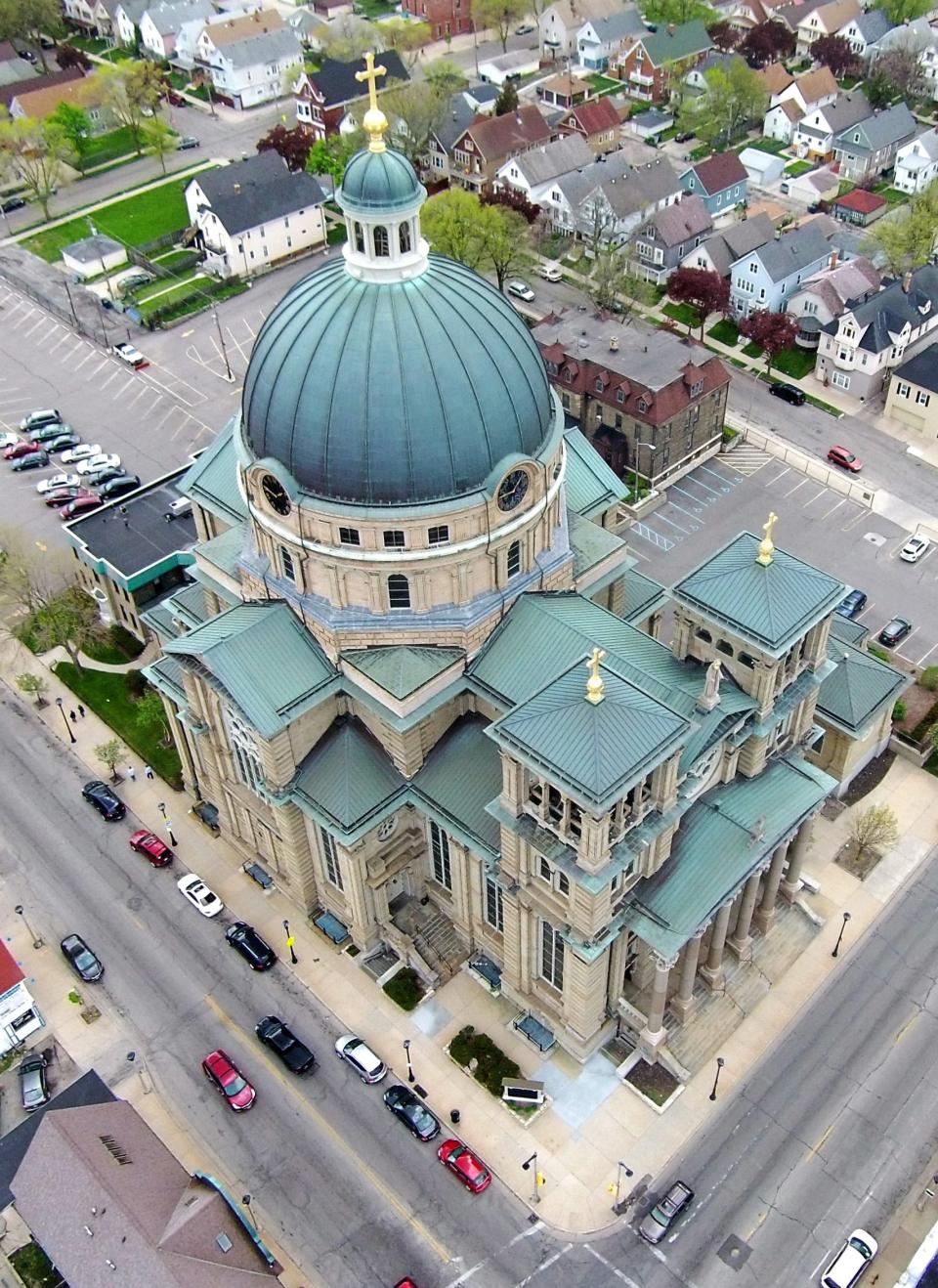About Milwaukee's Basilica of St. Josaphat
The Polish immigrants who poured into Milwaukee in the late 19th century wanted a beautiful church that telegraphed their strong Catholic faith and ethnic heritage. And they were willing to do anything for it.
They mortgaged their homes to raise money. They volunteered their labor. Fr. Wilhelm Grutza, the blacksmith-turned-pastor, shipped 500 rail cars of salvaged materials from a shuttered Chicago post office. He died five weeks after the church's dedication in 1901, exhausted from overwork.
In a city dotted with steeples and infused with Catholic tradition, the Basilica of St. Josaphat stood out. Modeled after St. Peter’s Basilica in Rome, its 220-foot-high copper dome was only second in size to the U.S. Capitol at the time.

Today, 123 years later, the ornate basilica is still larger-than-life. It’s a tourist destination as well as a hallowed space. The faithful who gather understand they’re among tens of thousands who have knelt in the pews for prayer, and heard the acoustics echo, and craned their necks to take in the intricately decorated cupola.
It’s Milwaukee’s largest church. It’s always been an anchor of the south side. But its dome – first illuminated at night in 2019 – cemented the basilica’s place in Milwaukee’s skyline for years to come.
Even as church attendance and religious belief decline, the dome is a reminder of Catholics’ indelible impact on the city.
It calls to drivers passing on Interstate 43: I’ve been here over a century, and I’m here to stay.
See the rest of Milwaukee's 100 objects
This article originally appeared on Milwaukee Journal Sentinel: About Milwaukee's Basilica of St. Josaphat

